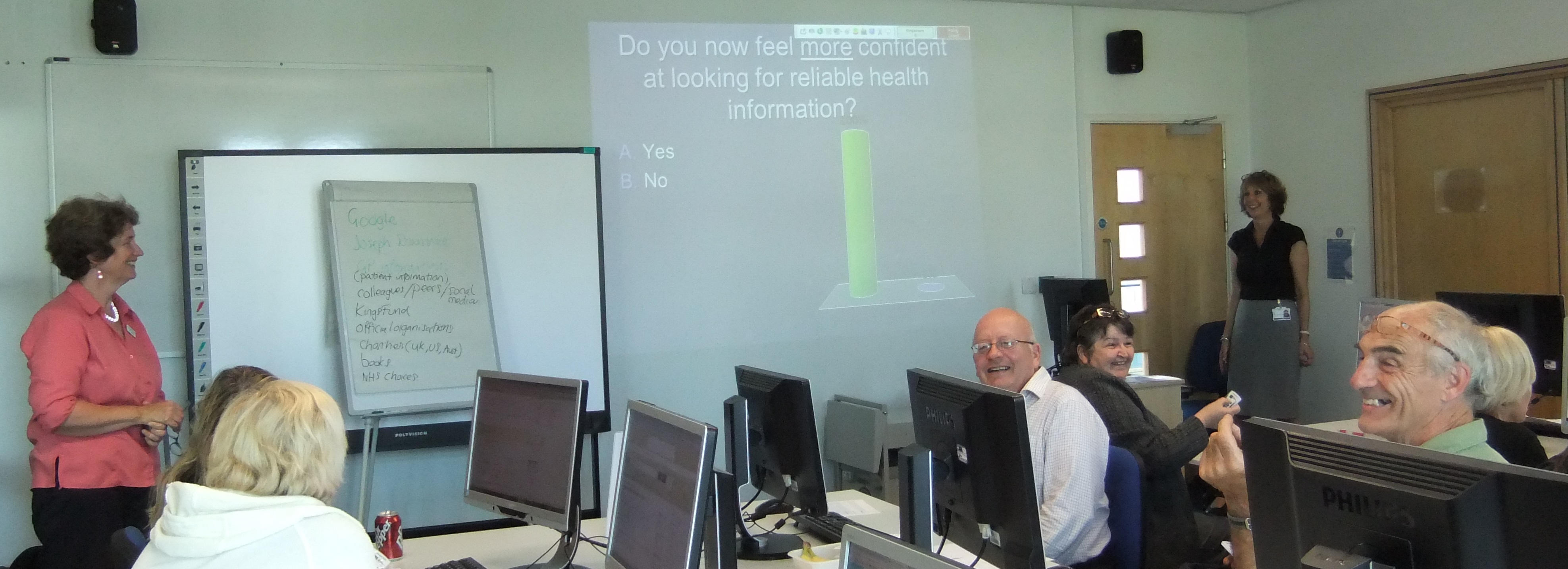Putting the horse before the cart: an agenda for public engagement
By Kath Maguire
Swapping roles from that of a patient/carer involvement activist to become an associate research fellow for public engagement, I was only too aware of the challenge. From where I had been standing the public engagement horse had always looked as if it was being dragged, often reluctantly, behind the research cart.
The importance and magnitude of this challenge was brought home to me recently when we, at the National Institute for Health Research (NIHR) Collaboration for Leadership in Applied Health Research and Care South West Peninsula (PenCLAHRC), ran a workshop with our public involvement group on the NIHR ‘Breaking Boundaries’ review . Overwhelmingly, people identified the main barrier to patient and public involvement as arising from a general lack of awareness that it takes place or how people could go about getting involved. This seems to indicate that there is an important piece of work to be done, not only engaging people with research, but also engaging research with people.
Until recently, public engagement has been seen as following research rather than preceding involvement. It has been about telling people what research does rather than asking them what it should be doing. The INVOLVE website makes a clear distinction between engagement and involvement. Instead of the active involvement of patients and members of the public in research projects and organisations, engagement is defined as where information and knowledge about research is provided and disseminated to them. This reflects the way public engagement in science has traditionally been framed. It is an agenda that has focused, almost exclusively, on informing the public in the hope of getting them to engage with the importance and value of academic research.

There is a good reason for this. In a democracy, public science can only be sustained if it has the support of the public, a public motivated to value and to pay for it. This truth has been disseminated widely across the scientific community, though perhaps some were a little slow to catch on. I am not claiming this as the only motivation for public engagement activities but it is a very strong driver, especially at institutional and strategic levels. Research institutes and universities want us to understand why they are worth funding.
The trouble with that concept of engagement is that it is not particularly engaging. The provision of information and knowledge to (or at) the public frames them as a passive audience, spectators rather than players. In fields like health research, where patients and the public are the subjects of the information and knowledge being disseminated, this is particularly problematic. It can be experienced as alienating and disempowering. Unless engagement provides people with opportunities to contribute, to interrogate, and to become involved in research there is a danger of research being experienced as disengaged with them, and therefore irrelevant. Engagement needs to be a two-way process.
In a world where we are bombarded with information, much of which we filter out as unhelpful, public engagement has to do better than provide the public with even more information. It has to create openings through which people can contribute to and benefit from research. Researchers need to be able to engage with members of the public rather than doing engagement at them. Genuine engagement has to involve listening and enabling as well as informing.
Fortunately, and thanks to the work and commitment of many people, engagement is becoming more engaged with the public. The National Co-ordinating Centre for Public Engagement works to support universities in “sharing our knowledge, resources and skills with the public, and to listening to and learning from the expertise and insight of the different communities with which we engage”. This is a much more mutual picture of engagement, framing the public as co-creators of human understanding rather than as either research subjects or information consumers. Engagement of this kind requires a redefinition of the relationship between the public and science. It also suggests that we need to get better at connecting engagement, involvement and participation in research, making it easier for people to move between them, engaging on their own terms.
This movement of the boundaries has already been recognised by the NIHR. In April 2014 Simon Denegri wrote in the strategy document “Promoting a ‘research active’ nation”: “In time… the NIHR would anticipate integrating our public involvement, engagement and participation plans and their delivery into one strategy.” So it is a good time to open up the debate: what is engagement for? how can research become more engaging? how can engagement support and motivate involvement?
It is time to put the horse where it belongs, in front of the cart.
Contact: Kath Maguire, Associate Research Fellow for Public Engagement, NIHR Collaboration for Leadership in Applied Health Research and Care South West Peninsula (PenCLAHRC)
Email: K.Maguire@exeter.ac.uk
Tel: 013 9272 6059




